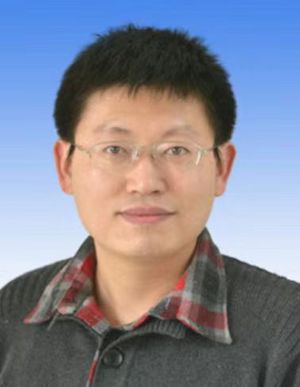Home> Academic Sessions
Session 8: Neurobiophysics - Cell and Molecule/Circuit and System
Updated: 2022-08-18
Neurobiophysics — Cell and Molecule
Neurodegeneration is a progressive loss of function of neurons, which is present in neurodegenerative diseases such as Alzheimer’s disease (AD) and Parkinson’s disease (PD). There are common cellular pathways that are altered in these disorders, including loss of homeostasis in transcription regulation, misfolded protein clearance and mitochondrial function. Continuous research efforts should focus on understanding the cellular and molecular underpinnings behind these disorders and developing novel diagnostic and therapeutic targets for them.
This symposium session will invite six distinguished scientists in the field who have made recent significant discoveries in seeking to understand the cellular and molecular mechanisms of neurodegenerative diseases.
Chairmen

Liu Qiang
Professor, University of Science and Technology of China

Qi Shiqian
Professor, Sichuan University
Invited speakers & reports
Liu Xingguo
Research fellow, Guangzhou Institutes of Biomedicine and Health, Chinese Academy of Sciences
Report: Mitolysosome exocytosis: New approaches of mitochondrion quality control for Parkinson's disease
Jiao Jianwei
Research fellow, Institute of Zoology, Chinese Academy of Sciences
Report: Studies on neural stem cells and the mechanism of developmental brain diseases
Chai Renjie
Professor, Southeast University
Report: The potential application of Stem Cell transplantation in the Cochlear Implants
Xu Xiaojun
Research fellow, China Pharmaceutical University
Report: UPRmt activation for the treatment of Parkinson's disease
Kong Eryan
Professor, Xinxiang Medical University
Report: The roles of protein palmitoylation in neurodegenerative diseases
Liu Qiang
Professor, University of Science and Technology of China
Report: Epigenetic regulation of Alzheimer’s disease
Neurobiophysics — Circuit and System
Diverse neuron types are interconnected via local or long-range synapses to form distinct neural circuits, which are basic modules for different brain functions and behaviors. Dissecting the circuit connectivity and function is a fundamental demand for understanding how the brain works, especially in the era with the recent development of the state-of-the-art techniques in systematic visualization of neuronal circuits and functions such as serial Cryo-EM, micro-optical sectioning tomography (MOST), optogenetics, trans-synaptic viral tracing and in vivo large-scale electrophysiology or imaging of neuronal activity.
This symposium session will invite six renowned domestic system neuroscientists who have recently published very important discoveries in the field of neural circuits and systems in highly influential journals including Nature Neuroscience, Neuron, Nature Communications, and PNAS, to present the latest findings on the organization and function of brain circuits and even the whole-brain that underlies the sensation, learning and motivated behaviors as well as the maladaptive neural functions associated with neurological diseases.
Chairmen

Cao Peng
Research fellow, National Institute of Biological Sciences, Beijing

Xu Han
Professor, Zhejiang University
Invited speakers & reports
Li Xiaoming
Professor, Zhejiang University
Report: Studies on neural circuits of emotion and affective disorder
Wang Liping
Research fellow, Shenzhen Institute of Advanced Technology, Chinese Academy of Sciences
Report: Fear and sleep circuits
Zhang Zhi
Professor, University of Science and Technology of China
Report: Neural circuit mechanisms of targeted visual systems in pain regulation
Gao Zhihua
Professor, Zhejiang University
Report: Structures and functional analysis of hypothalamic neuroendocrine system
He Miao
Research fellow, Institutes of Brain Science, Fudan University
Report: Combinatorial genetic dissection of neural circuits
Zhan Cheng
Professor, University of Science and Technology of China
Report: Roles of hindbrain catecholaminergic neurons in control of energy metabolism
